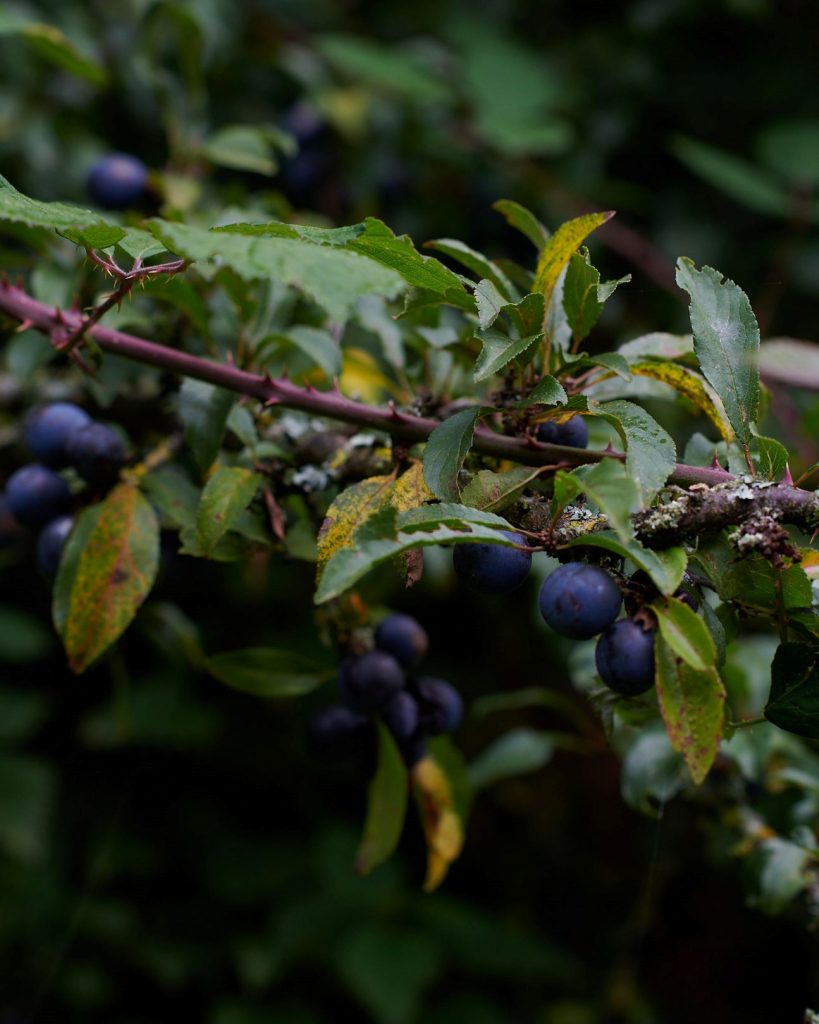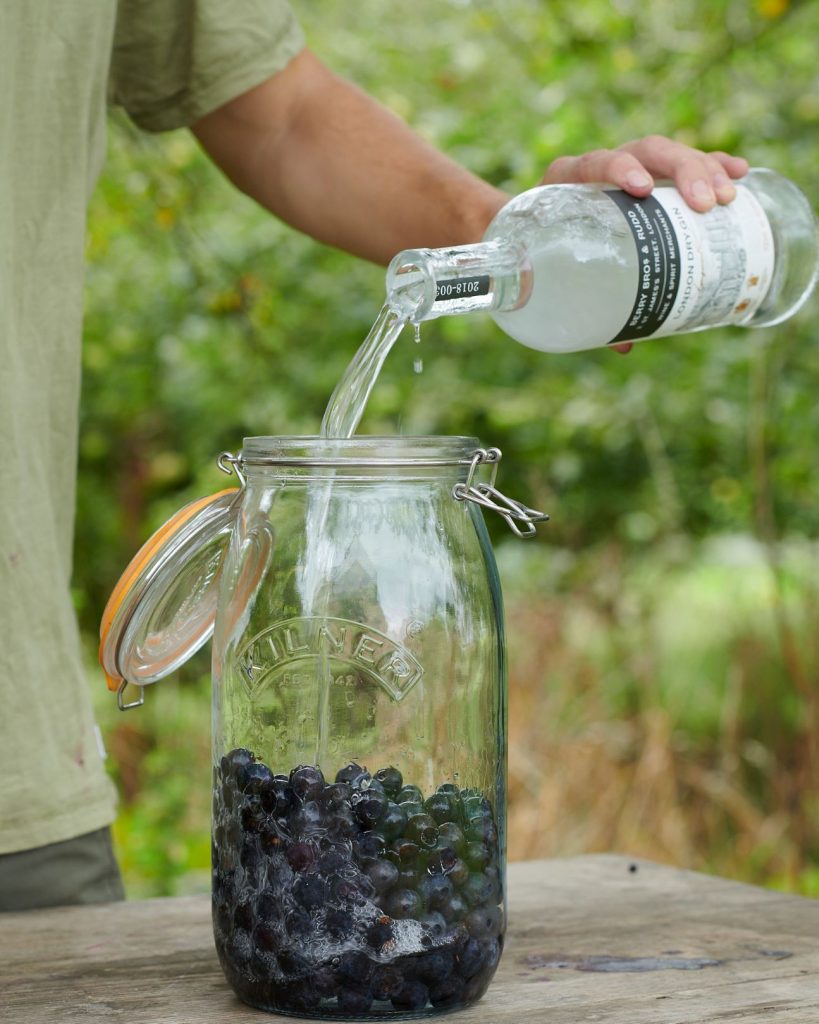How to make sloe gin
Author: Julius Roberts

Sloe gin: the famous elixir. A deep maroon, viscous and warming potion. A friend of the flask and something we used to sneak sips of from the booze cupboard as kids. I’ll never forget the day my grandfather handed me his hip flask on the way back from church one Christmas.
It was properly freezing in the way that winter used to be, black ice hiding in every crevice of Butchers Lane on the way home, frozen ponds and trees dripping with pearled cobwebs. Everyone raced ahead to check on the turkey; it was always a chaotic affair.
My grandfather was slow, with terrible eyesight, so I stayed back to lead him home. Grinning he passed it down to me and said “just a sip,” but I of course took a hearty swig and spluttered as it burnt down my throat deep into my chest.

Method
Wait until October to pick your sloes when they are at their fattest and most developed. The best trees are guarded secrets and any city dwellers might want to start picking a little earlier for fear of missing out. Fill your basket with ripe fruit that has a little give and watch for the thorns as they can be nasty. Pick through the basket at home and discard any twigs, leaves and dodgy berries.
Don’t bother piercing them all over; this is a fool’s errand. But place in the freezer overnight instead and you’ll find they burst on impact with the gin.
Half fill a large jar with sloes and then cover to the top with quality gin; save the bottles. Leave for four to six months in a cool dark cupboard to infuse and then sieve out the sloes.
Make a sugar syrup with equal parts sugar and water. Boil and whisk until the sugar is fully dissolved. When cold, add slowly to the gin, tasting sparingly until you think you’ve found the right balance. Pour back into the bottles and leave to age for as long as you can.
The sweet spot is apparently 18 years where the sloe gin will have developed complex and chocolatey flavours. If you manage to wait this long, please send me a small flask or vial. I’d love to try it as I seem to rarely make it past Christmas.
This principle works with any fruit: damson, bullace, greengage, cherry, blackberry. Spices are also worth experimenting with in sparing quantities and add complex bitter aromatic flavours reminiscent of Angostura.
If you’re shopping for ingredients to make your sloe gin, our London Dry is an excellent choice. You can find it here.



A most enjoyable read with humour. Loved it enough to want to comment. Also thankyou for the tips, especially not needing to prick each sloe
Thank you for the tips and a very enjoyable read. We are fortunate that we get October sloes from the Dordogne which are a lot sweeter that those here. I have never pricked these. Because of their sweetness, I only use 1 tbsp of sugar per bottle. Shall use the syrup method in future. Have a couple of bottles from 6 years ago (later ones gone!).
My elderly mother had given me her recipe which required the sloes to be pierced. When asked what with, she replied “with a hat pin, of course”! Luckily we found the freezer tip in time for our second vintage!
Leaving the sloes to ripen properly is a key point – underripe fruit results in a harsh, insipid drink. I think the maturation time suggested here is too long – the sloe gin can tend to take on an almondy taste from the stones after 3 months which some people dislike.
Finally, the sugar syrup suggestion sounds a bit of a faff to me – I simply throw 500g fruit, 250g sugar and 1L of the strongest gin I can lay hands on in a 2L Kilner jar; shake once a day for a week, and once a week for three months.
Ha.. I was one of those City Dwellers picking from mid September and managed to make around 4 litres, not yet opened 🙂
Great little story..